Clarke Engineering, the brainchild of 27-year-old engineer Michael Clarke, is set to unveil a dual-purpose rake and tedder at this year’s National Ploughing Championships.
The Ballindine man works full-time as an engineer for Malone Farm Machinery, but designed and built the 20ft dual-purpose rake and tedder at home in his spare time.
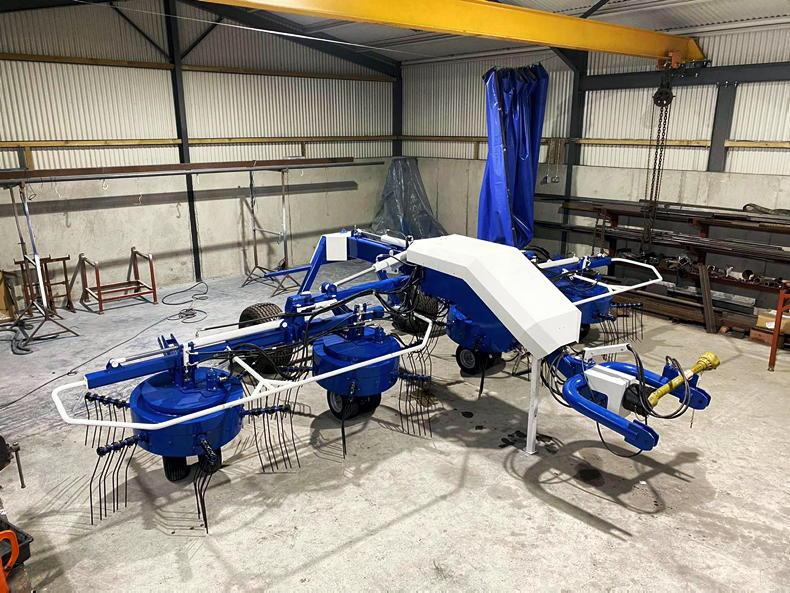
One big advantage of the hydraulic system is all changes of direction and speed can be achieved at the flick of a switch.
He explained that the project has long been a work in progress, with the design work having been carried out over a couple of years on and off, while the Mayo man was in college.
He noted that fabrication began initially in January 2020 and the unit was tested over the course of this summer.
How does it work?
The machine consists of four rotors, a chassis and features its own independent hydraulics with a tank, tandem pump and valve bank. The rotors are hydraulically driven.
When tedding, axle folds up out of the way. Each pair of rotors shake out one 10ft swath each, the same as with a conventional stand alone tedder.
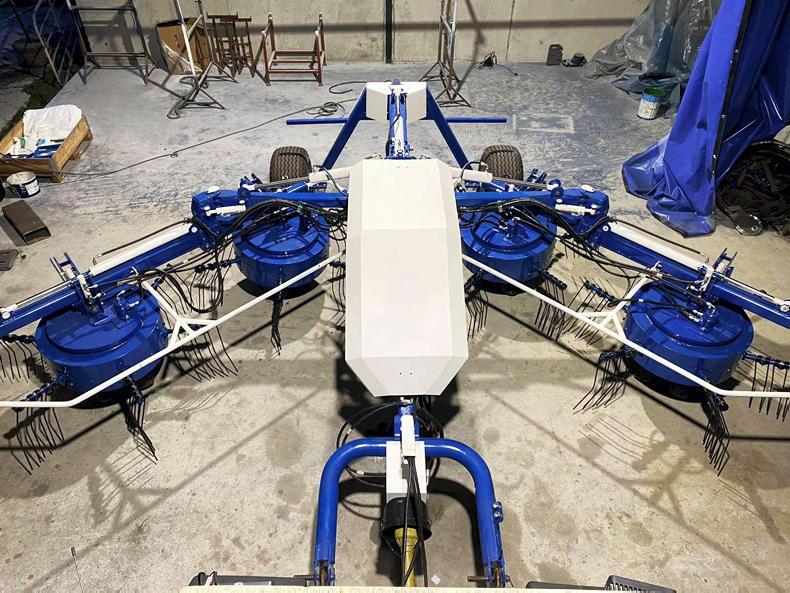
When raking, the rotors run with each other, while running at a slower speed.
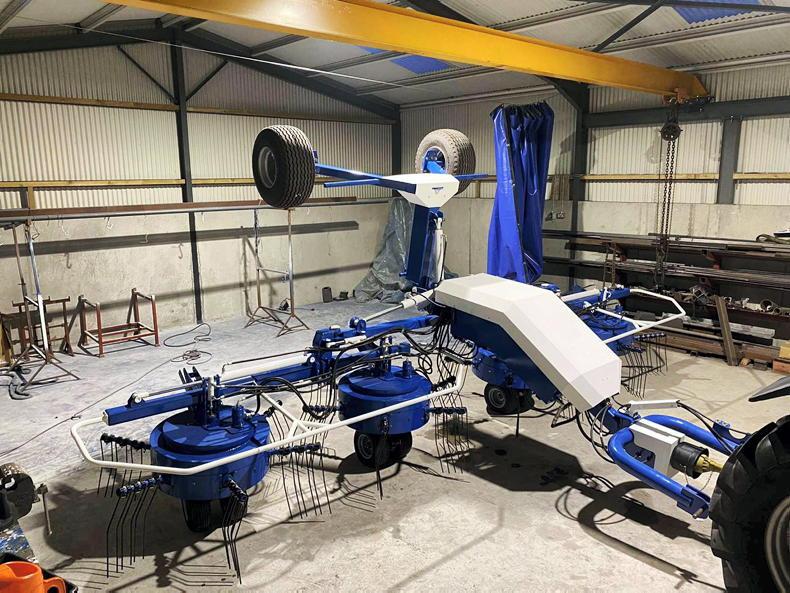
When tedding, the axle folds up out of the way and the two left rotors run in opposite directions, as do the two on the right.
The rotors also run at a higher speed. When raking, the four rotors all feed grass towards the centre of the machine, to form one swath, while running at a slower speed.
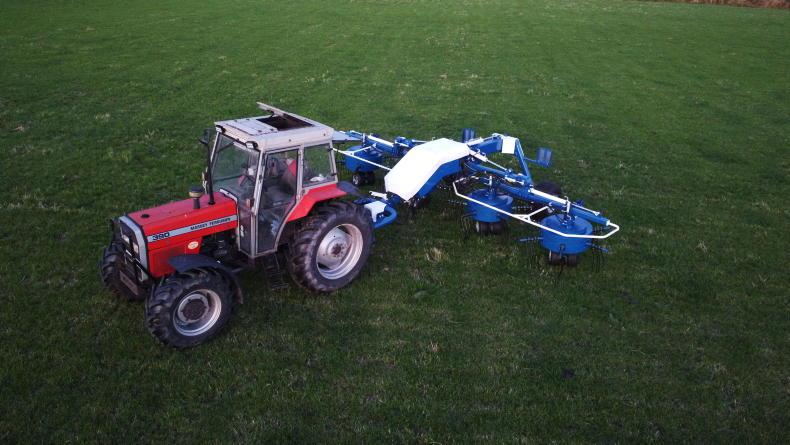
He explained that the project has been a long-term work in progress, with the design work having been carried out over a couple of years on and off while the Mayo man was in college.
One big advantage of the hydraulic system is that all changes of direction and speed can be achieved at the flick of a switch.
Michael explained that the ability to perform both tasks with the one machine is achieved through the unique design of the rotor, meaning bigger machines are more than achievable by adding more rotors.
The machine weighs in at 2,100kg and requires one double acting spool.
Clarke Engineering, the brainchild of 27-year-old engineer Michael Clarke, is set to unveil a dual-purpose rake and tedder at this year’s National Ploughing Championships.
The Ballindine man works full-time as an engineer for Malone Farm Machinery, but designed and built the 20ft dual-purpose rake and tedder at home in his spare time.

One big advantage of the hydraulic system is all changes of direction and speed can be achieved at the flick of a switch.
He explained that the project has long been a work in progress, with the design work having been carried out over a couple of years on and off, while the Mayo man was in college.
He noted that fabrication began initially in January 2020 and the unit was tested over the course of this summer.
How does it work?
The machine consists of four rotors, a chassis and features its own independent hydraulics with a tank, tandem pump and valve bank. The rotors are hydraulically driven.
When tedding, axle folds up out of the way. Each pair of rotors shake out one 10ft swath each, the same as with a conventional stand alone tedder.

When raking, the rotors run with each other, while running at a slower speed.

When tedding, the axle folds up out of the way and the two left rotors run in opposite directions, as do the two on the right.
The rotors also run at a higher speed. When raking, the four rotors all feed grass towards the centre of the machine, to form one swath, while running at a slower speed.

He explained that the project has been a long-term work in progress, with the design work having been carried out over a couple of years on and off while the Mayo man was in college.
One big advantage of the hydraulic system is that all changes of direction and speed can be achieved at the flick of a switch.
Michael explained that the ability to perform both tasks with the one machine is achieved through the unique design of the rotor, meaning bigger machines are more than achievable by adding more rotors.
The machine weighs in at 2,100kg and requires one double acting spool.







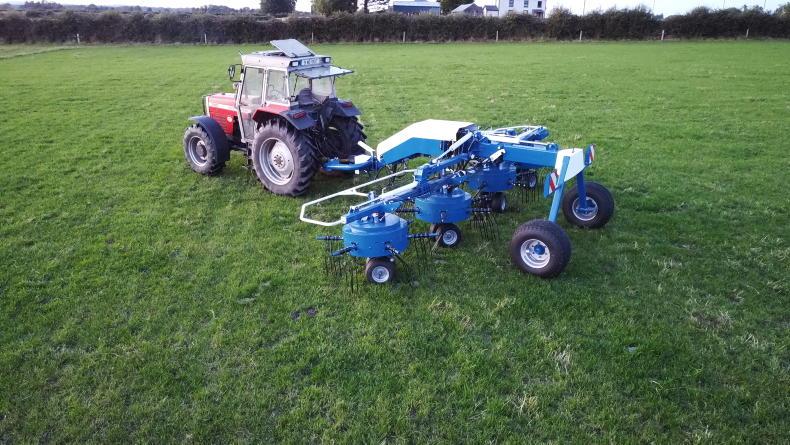


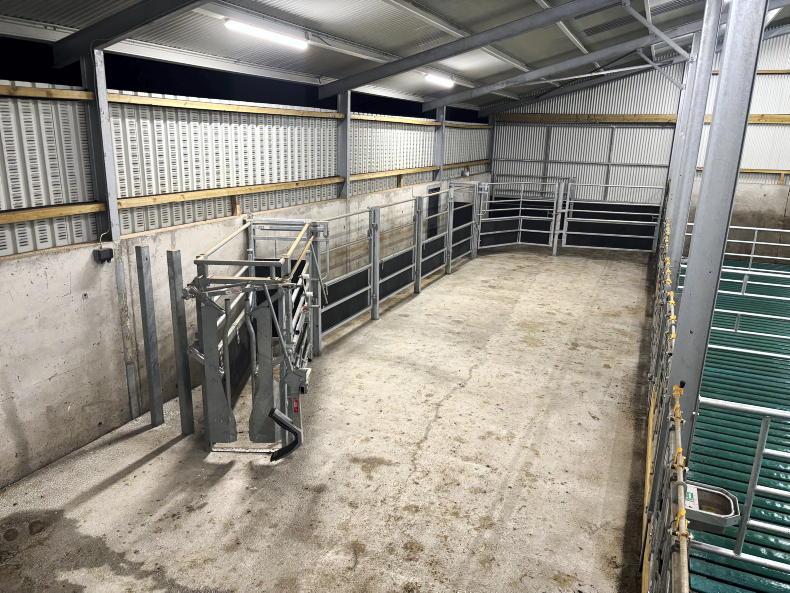


SHARING OPTIONS